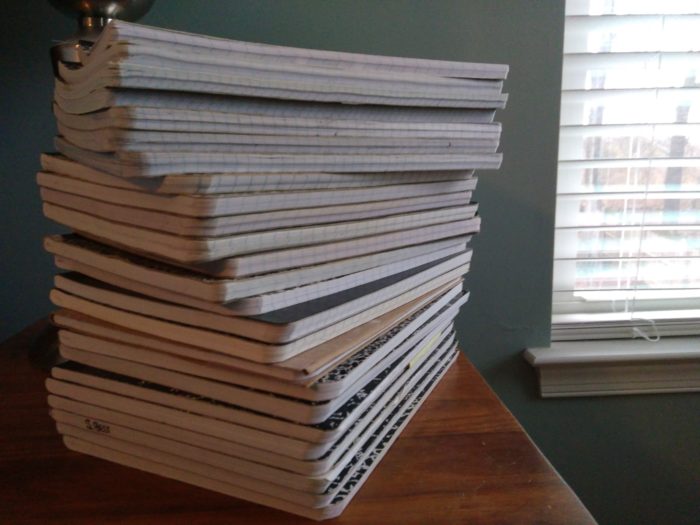by Steve Best

The following is a guest post from friend of the site Steve Best. He’s someone whose work I’ve known about for some time now. His blog is very cool because every post has it’s own layout and design — each one art directed. Well worth a visit for that alone.
I have written about my love for the composition book on a couple of occasions on my personal site. The first was more or less to share my analog task management system, and the second was to heap praise on the composition book, while also sharing my brief move away from it and how it drew me back in. In that piece, I touched on a few main reasons that I prefer the composition book, including the fact that it is cheap in price, durable, and in my opinion, the perfect size.
I like the feeling of security that comes from using products that are ubiquitous as well as tried and true. Not to sound like too much of an old geezer (fact is, I am middle-aged and actually like technology), but unfortunately, it feels like nothing these days is made to last. TVs and computers certainly don’t last as long as they used to. My parents had the same living room TV for most of my childhood. The same goes for their dish washer, fridge, and HVAC system. I have been in my current home, which was built new, for roughly 5 years. I have gone through a number of TVs, two dishwashers, and my HVAC system has been repaired on a few different occasions. None of these things were cheap in price, mind you. It seems like clothes don’t last as long as they used to either, even for brands that traditionally stood the test of time. Certainly phones appear to be designed to be replaced at an ever increasing pace. And again, this is not limited to price bracket, as my wife’s iPhone 6S barely made it a year before she replaced it with the 7.
Circling back to the topic at hand, I mention all that to say that I have had my fair share of expensive things that needed to be replaced much sooner than I thought that they should, and as such, I may have become a bit cynical. Instead of purchasing the most expensive thing, I most often choose the cheapest thing that also gets the job done; fully accepting that what I buy will not last forever. This is especially true with an item the very nature of which is to be consumed, like a notebook. Yes, I could buy an expensive notebook, but it will eventually get filled up and sit on a shelf (or actually in the floor of my closet). 🙂 In fact, my last notebook before I switched back to the composition book was an expensive 300+ page leather bound journal. Guess what — it filled up eventually (albeit at a slower rate than would a composition book), but it was a huge, bug smasher of a notebook that was a pain to carry around. It was also lacking in the durability department. By the end of its life, it was well worn, and not in a Wabi-sabi kind of way. The composition book, as such, is perfect for me because it is super cheap, and each one is basically the same size, weight, shape and durability as the other, no matter which brand you buy. It is truly an ubiquitous product. One can go to any grocer, drug store, or big box store and find one. If you have kids, you may already have a few lying around the house, as the composition book remains a popular school supply, even in an age where traditional textbooks have been supplanted by the Chromebook.
Not only is the humble composition book ubiquitous, it is the Goldilocks of notebooks. At roughly 9 ¾ inches tall by 7 ½ inches wide, the composition book is not too small and not too large. I have tried some “full sized”, executive style notebooks in years past. They always seem to get in the way, and they aren’t as portable as I would like. There seems to never be quite enough desk space. At the same time, going with something smaller than a composition book (like a Field Notes, maybe) will not give me enough room on each page. I don’t want to squint at my notebook.
The composition book is flexible, yet it is extremely durable. I’ve said it before, but I appreciate the fact that the composition book has sewn-in pages. I have never been a fan of notebooks with perforated pages or those with spiral bound pages. They seem less permanent to me, like I might accidentally lose a page or two if I am not really careful with them. As such, I am confident that what I put in my composition book will stay in my composition book.
If you have not yet done so, you should give the humble composition book a try. You may just like it.
Steve Best is a husband, dad, and Christian. He’s a tech enthusiast and loves Japanese cars. He’s an information security professional at a large company and maintains a small site as a creative outlet of sorts — a place to practice HTML, CSS and work on his writing.
